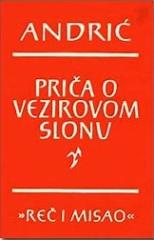
Sabrana djela II: Travnička hronika
„Travnička hronika“ ist ein Roman von Ivo Andrić, der erstmals 1945 veröffentlicht wurde. Dieses Werk gehört zu den sogenannten des Autors Bosnischer Zyklus und bietet ein umfassendes Bild der historischen, kulturellen und politischen Umstände in Bosnien
Der Roman ist eine Chronik der Ereignisse in Travnik, dem damaligen Sitz des bosnischen Wesirs, in der Zeit von 1806 bis 1814.
Der Roman spielt in Travnik, zu einer Zeit komplexer politischer Unruhen, als das Osmanische Reich, das napoleonische Frankreich und die Habsburgermonarchie um Einfluss auf dem Balkan kämpften. Im Zentrum der Geschichte stehen zwei ausländische Konsuln – der französische Konsul Jean Daville und der österreichische Konsul Joseph von Mitterer –, die mit ihren Familien nach Travnik kommen und mit der lokalen Bevölkerung, den Behörden und der Kultur interagieren.
Daville und Mitterer streben mit ihren gegensätzlichen Persönlichkeiten und politischen Zielen danach, die Gunst des Wesirs zu gewinnen und politischen Einfluss auszuüben. Ihre Ankunft symbolisiert den Eintritt des Westens in die geschlossene Welt Bosniens. Aufgrund kultureller Unterschiede, politischer Intrigen und unterschiedlicher Interessen geraten Konsuln und die lokale Bevölkerung häufig in Konflikt. Travnik wird als ein Ort dargestellt, an dem sich verschiedene Welten überschneiden – osmanische, westeuropäische und lokale bosnische.
Mit den Veränderungen in der Weltpolitik kommt es zum Rückzug der Konsuln und zum Ende ihrer Missionen in Travnik. Ihr Abgang symbolisiert die Vergänglichkeit politischer und historischer Ereignisse, während Bosnien in seinem zyklischen Zustand verharrt.
„Travnička hronika“ ist in Form einer Chronik geschrieben, mit einem Erzähler, der historische Ereignisse aus Distanz und Objektivität beschreibt. Der Roman zeichnet sich durch eine reichhaltige Sprache, detaillierte Beschreibungen und die psychologische Tiefe der Charaktere aus. Anhand der Geschichte der Vergangenheit betrachtet Andrić universelle Themen, die auch in der Moderne relevant sind.
Im Angebot sind keine Exemplare vorhanden
Das letzte Exemplar wurde kürzlich verkauft.





